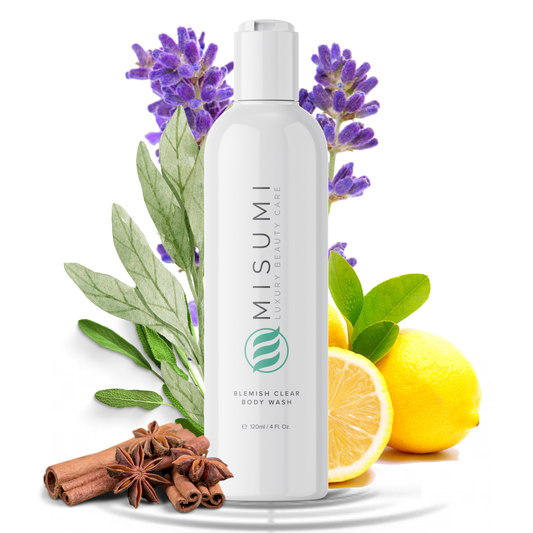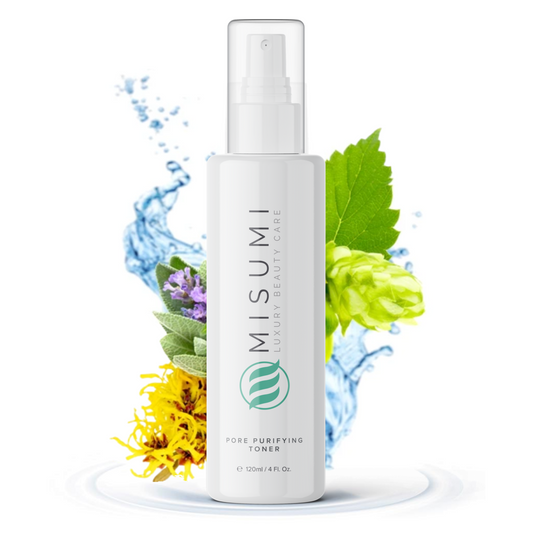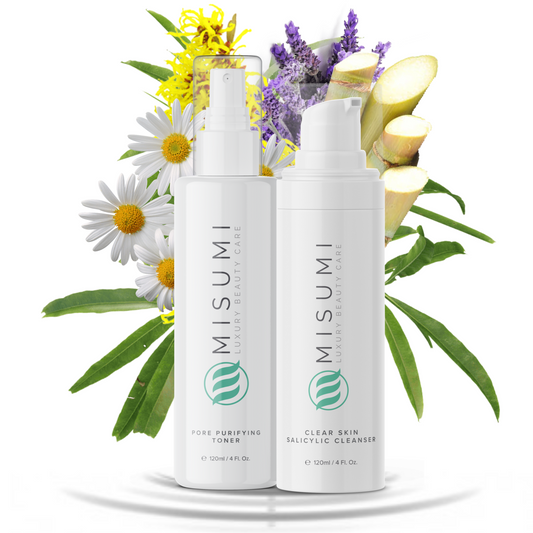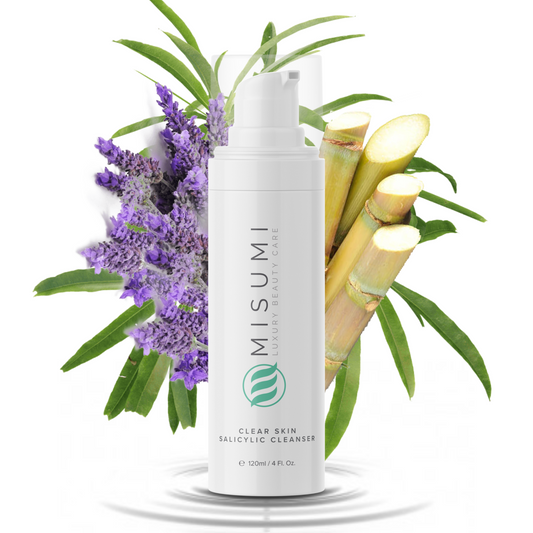Like it or not, most of us suffer from skin problems such as acne, and interest in cosmetic treatments and plastic surgery is at an all-time high. However, there is still a lot of misinformation, stigma, and misunderstanding associated with people who choose to opt for cosmetic surgery.
Whether you only want a wrinkle gone or would like a full-on facial reconstruction, the judgment persists. We at Misumi believe most of us fear what we don't understand. So today, we'll try to shed light on one specific cosmetic treatment - laser resurfacing.
What Is Laser Resurfacing?
Not your usual visit to the beauty salon, laser skin resurfacing is a cosmetic procedure done under a dermatologist's watchful, professional eye. Laser resurfacing is mostly used in treating surface skin irregularities visible on the outer layer of the skin. This includes acne scars, discoloration, blemishes, and wrinkles due to aging or other reasons (such as prolonged stress).
This type of cosmetic surgery is also used to remove tattoos. It's no wonder that laser resurfacing treatments are becoming more and more popular, and more and more people want to know about them.

How Does Laser Resurfacing Work?
The technique employs a specific type of laser that fires short but regular pulses of concentrated light at the desired area. These pulsating beams of light only remove the outer layer of skin. The technical, medical term for laser resurfacing is "lasabrasion," but it's also known as laser vaporization or laser peeling.
Lasers are differentiated by several key features.
Wavelength Is Crucial For Efficient Laser Resurfacing
The first feature is the wavelength, or in other words, the combined width and rate of the light beam that's emitted at the skin. Choosing the correct wavelength is crucial because it allows dermatologists and cosmetic surgeons to use the laser efficiently.

One wavelength will target the skin's surface layers, but another will enable the light to penetrate the lower levels of the skin and target the desired, deep skin layers. The lower the wavelength, the deeper the laser can penetrate. Conversely, the faster the rate of the laser's pulse, the more precisely it can be used - such as tackling small amounts of pigment residue.
Once the light beam hits its target, the target resonates to the light frequency. The laser heats the targeted material until it vanishes in a microscopic fiery explosion under the skin. (Yes, you read that right.)
While this sounds scary, laser resurfacing is perfectly bearable for most people. It feels as if someone is using an invisible, immaterial, super-thin needle to touch your skin. Think of laser resurfacing like a magician wielding their magic wand, making all your scars, wrinkles, and blemishes disappear.
Fragments of melanin (skin pigment) aren't the only target of laser resurfacing. It also targets water molecules, which connect to the collagen fibers that hold your skin together. The laser beam heats the water molecules at a certain depth. This doesn't cause the tissue to vaporize but tricks the skin into restarting its self-repair process and producing more collagen. This will then smooth the skin.

CO2 and Erbium Lasers: Two Types of Technology
Laser technology recognizes two types of lasers: CO2 lasers and Erbium lasers. CO2 lasers are older. In the beginning, patients needed up to a month to recover from the procedure. This is because the original CO2 laser fired more heat.
However, modern CO2 lasers are much better. Called "fractioned CO2", contemporary CO2 laser resurfacing methods induce less heat, resulting in a shorter recovery time (around two weeks).
Erbium lasers, on the other hand, use a different method that hurts a lot less. They're used to smooth the deeper kinds of wrinkles and remove scars and blemishes. Erbium laser resurfacing also works better on darker skin tones. Recovery usually takes a week, but always seek the professional opinion of your dermatologist.

But what about you - is laser resurfacing a suitable treatment for you? Let’s see.
Who is Laser Resurfacing For?
Laser resurfacing is an appropriate treatment for anyone who has blemishes, scars, or wrinkles they want to get rid of. However, remember that laser resurfacing works best for fairly shallow skin irregularities - deep scars or deep wrinkles may need repeated laser treatments, the use of different medical treatments, or different skin care routines altogether. All ages can reap the benefits of laser resurfacing.
Who Should Avoid Laser Resurfacing?
Those with a significantly darker skin tone don't usually see good results from laser resurfacing. That is because the laser is limited - it can burn away melanin (skin pigment) but not add it. However, as mentioned above, the latest generation of CO2 lasers, especially Erbium lasers, show better results on people with darker skin tones.

Those suffering from acne should also avoid laser work. The intense pulsed light will only introduce new micro-wounds inside your skin, making your acne problem much worse, damaging the outer layer, and increasing the likelihood of ending up with severe scars. If you're looking to treat acne, there are a range of good acne medications to try, as well as effective skin care products.
Dermatologists also don't recommend using laser resurfacing for stretch marks. The rationale behind that is logical - stretch marks occur due to the skin being stretched, i.e., it is already damaged. It needs time to recover, and burning new tiny holes into your stretch marks won't improve their appearance or your skin's health.
Preparing for Your First Laser Resurfacing Treatment
Schedule a visit to your doctor and dermatologist and ask for their professional opinions. If possible, seek the opinion of a dermatologist or a doctor who has experience with laser skin resurfacing.
After they take your medical history, current health, and desired results into account, they can determine which laser treatment would work best for you.
People who experience fever blisters or cold sores around their mouth may experience the same thing after going under the laser. If you have a history of those skin conditions, please inform your doctor so they can take all the necessary precautions.

Your doctor or dermatologist will probably tell you to stop taking certain pills, medicines, or supplements. Usually, these are ones that affect the clotting of your blood, like vitamin E, ibuprofen, or aspirin. Your skin can't recover if your blood is prevented from doing its job - which is clotting up and closing your wounds. Generally, stop taking them ten days before the treatment.
Another risk factor is smoking. If you're a smoker, your skin will heal a lot slower. So if you plan to have a laser resurfacing treatment, it's best to stop smoking at least two weeks before going under the laser.
Finally, your doctor may prescribe you an antibiotic to prevent bacterial infections. As a preventive measure, you must take these antibiotics for a week or several days before your laser resurfacing treatment. Additionally, doctors may sometimes even prescribe you antiviral medication, especially if you are susceptible to breakouts of cold sores or fever blisters.

So, What is Laser Resurfacing Like?
Let's say you've read many articles, consulted with everyone you know, and your dermatologist has given you the green light. You've taken every piece of advice and all the necessary preparations for your first treatment. What happens next?
There are several things to keep in mind, which should also reduce any anxieties you might be feeling.
Do I Need to Stay in the Hospital After Laser Resurfacing?
The short answer is no. It's an outpatient procedure, meaning you can usually leave on the same day. The process itself doesn't inflict any serious wounds that would require medical oversight.

How Long Does Laser Resurfacing Treatment Take?
Depending on the treatment area, laser skin resurfacing work can generally take 30 minutes to 2 hours. Targeting the occasional wrinkle, blemish, or scar will result in a shorter procedure. However, if you choose to have full-face resurfacing, the process can take 2 hours or more.
Is Laser Resurfacing Painful?
Don't worry - laser skin resurfacing is a pretty painless process.
Doctors often use anesthesia to numb parts of the body when it comes to resurfacing. Why? Without it, it can be a painful experience. The pain isn't unbearable, but it depends on the area of the body you're getting treated. The wider the skin being lasered, the greater the pain.
For this purpose, doctors use anesthetics. If the targeted features are few and far between, your doctor will use a local anesthetic to numb your sensitivity there. If you treat wider areas of the skin or entire body parts, the doctor may offer to give you general anesthesia.

What Should I Do After My Laser Resurfacing Treatment?
After treatment, the area will be cleaned and bandaged. The bandages should be removed after 24 hours.
Clean Your Skin Every Day
Doctors recommend cleaning your skin at least 4 or 5 times every day. After the cleanup, you will need to apply petroleum jelly (or another type of ointment) to prevent the formation of scabs. This is because scabs can complicate the benefits of the procedure.
Healing time depends on a combination of factors, such as the treated area, the severity of the scars, wrinkles, or blemishes, and the type of laser used (CO2 or Erbium laser resurfacing). Depending on those factors, the recovery process can take anywhere from 10 to 21 days or more.
Control Swelling
Swelling is a normal reaction. To mitigate this, use ice packs. Put them over the affected area and leave them there for a while. In addition, doctors may prescribe steroids to reduce skin swelling, especially around the eyes.
Sleeping in an elevated position can also prevent swelling. An extra pillow can be a lifesaver during the recovery process.

Endure, or Mask, the Redness
A week after the treatment, your treated skin will probably feel dry and start to peel off. This is normal - don't worry.
When this process passes, you can use makeup again to cover the redness, as long as it's oil-free. If you're not self-conscious about your appearance, just let your skin take time to heal. The redness will go away completely in a couple of months.
Use a High-Quality Sunscreen
Once your skin has healed, the result will be a brighter, lighter skin tone. However, there are a couple of important changes you need to be aware of. A lighter skin tone makes you more vulnerable to solar UV radiation, leading to sunburns.
To prevent this, doctors and dermatologists recommend using a broad-spectrum sunscreen, which shields you from the sun's ultraviolet A and B rays. Use a 30 SPF sunscreen for higher protection.
Limit sun exposure as much as possible. Avoid direct sunlight for prolonged periods, especially between 10 AM and 2 PM, when solar radiation is the strongest and most direct. Light clothes and wide hats can also help you protect yourself from sun exposure.

Moisturize, Moisturize, Moisturize
Your new skin needs to be well moisturized and taken care of. A high-quality, natural moisturizer is the best option here. We also recommend skin care solutions that contain glycolic acid or Retin A.
Don't rush to moisturize your skin too early in its healing process. Dermatologists recommend using moisturizers at least six weeks after the treatment.
Types of Laser Resurfacing
As you might expect, today's market offers many choices regarding laser resurfacing treatments. Not every treatment will target or even affect the same skin problems, so it's important to figure out the best laser treatment for you.
Here's a breakdown of the laser skin resurfacing treatments available.

Anti-Redness Laser Resurfacing
People turn to anti-redness laser skin resurfacing treatments to get rid of rosacea, sunburns, young stretch marks, reddish scars, wine stains, certain types of red-hued bruises, cherry angiomas (a special kind of red skin mole), spider veins, and even some types of basal and squamous skin cancer cells.
Anti-redness lasers target hemoglobin, one of the main proteins in red blood cells and blood vessels. Two types of lasers - the PDL (pulsed dye laser) and the KDL (using a potassium-titanyl-phosphate crystal to focus light) heat and destroy microscopic blood vessels. The fewer the microscopic blood vessels, the lower the redness.
Usually, the lasers used for anti-redness are almost not painful. The PDL laser may cause prickling but no intense pain. The KTP laser will feel like a tiny wave of coldness hitting your skin, followed by a short pinching sensation.
After the treatment, your skin will be sensitive, puffy, and pink for several hours. Remember, only trust professional, medically certified dermatologists when undergoing laser treatment.

The price for anti-redness laser skin resurfacing will depend on the skin area you want to be treated, but it can cost anywhere between $300 and $1000 per session.
Pigment-Pulverizing Laser Resurfacing
Pigment-pulverizing laser treatments target skin fragments where an increased amount of melanin is present. Additionally, pigment-pulverizing laser resurfacing is used in the removal of tattoos.
As with anti-redness lasers, pigment-pulverizing laser treatments employ two broad categories of laser technologies: Q-Switched lasers and so-called Picosecond lasers.

Q-Switched lasers are best suited to target specific skin features, such as sunspots. It often gets rid of them in a single shot. Q-Switched lasers offer a broad selection of wavelengths, making them suitable for all skin tones. Certain types (such as the Nd:YAG laser) are better for targeting deeper deposits of skin pigment, which is helpful for people of African American, Indian, Asian, Hispanic, and Native American complexions. Those from the Mediterranean might find the Ruby laser is better, as it's stronger.
Picosecond lasers fire at rates even faster than the Q-Switched ones. While the latter lasers fire at a rate of one billionth of a second (a nanosecond), Picosecond lasers fire acoustic waves 1,000 times faster than that, earning the 'picosecond' moniker. The faster the laser pulses, the less heat, pain, and recovery time. Picosecond lasers are super efficient at deconstructing ink pigments in tattoos. However, the complete removal of tattoos may need multiple treatments over a few months.

Is this painful, though? Not so much. Having a Q-Switched laser hitting your skin feels like getting slapped by a snapped rubber band.
However, when using a Picosecond laser to remove tattoos, the pain can become palpable and sometimes even unbearable as the laser beam destroys the pigment. For this purpose, dermatologists usually apply a local or general anesthetic, depending on the treatment area.
Afterward, the treated area will feel bruised. Initially, it will turn pink or white and irritated, forming a dark purple scab as the skin heals itself. This scab should be left alone to do its work. After a week or so, it will fall off, revealing healthy, new skin below.
For those removing their tattoos, the wounds will become less intense with every subsequent procedure. This is because there is less pigment, creating fewer explosions. After a week or so, your skin should be fine.

Before using a pigment-pulverizing laser resurfacing method, make sure you're in experienced hands. This will help you avoid some of the side effects associated with this sort of laser treatment, like hyperpigmentation or hypopigmentation.
The price for pigment-pulverizing resurfacing treatments is usually around $300 to $1000 per session relative to the area being treated.
Non-Ablative Laser Resurfacing
Non-ablative laser treatments tackle light scars, melasma (grey or brown patches on the skin), or moderate sunburns or sun damage.
Non-ablative lasers are non-removal lasers. They use a so-called diffractive lens. The lens reduces and spreads out the intensity of the laser, enabling this non-ablative laser resurfacing method to only heat the targeted tissues instead of vaporizing them.

This method doesn't inflict any skin damage or wounds but kickstarts the skin's rejuvenating processes, telling it to produce new collagen fibers, which will tighten skin and improve its appearance.
This doesn't mean that the treatment is entirely painless. These lasers can induce sensations of zapping or static electric shocks accompanied by intense heat. Doctors and dermatologists will often apply a local numbing cream and even give you painkiller medications like ibuprofen and acetaminophen beforehand to make it a bearable experience.
Since the treatment doesn't damage the skin, recovery is much shorter. The skin can recover from it within a single day, but sometimes up to a week.
Non-ablative laser resurfacing is pricier than the aforementioned anti-redness and pigment-pulverizing laser treatments. Depending on the area treated, the type of laser non-ablative laser treatments can cost anywhere between $500 to $2500.
Ablative Laser Resurfacing
Ablative lasers are perfect for treating more severe skin features, such as severe sun damage, acne scars, large scars, and deep wrinkles.

The heat that an ablative laser resurfacing treatment produces is more intense than other lasers. While anti-redness and pigment-pulverizing laser resurfacing treatments are technically ablative, their energy output and tissue damage are negligible compared to the ablative method.
Ablative lasers are designed to create wounds in the underlying skin and surrounding tissues. This simultaneously reorganizes your tissues and tricks the body into super-recovery mode. The intentional tissue removal, combined with the flood of collagen, makes ablative laser resurfacing a powerfully efficient but very slow method for skin rejuvenation.
Is it painful? In reality, yes. But you'll be so anesthetized and numbed down that you won't feel a thing. Valium, Percocet, nerve-numbing lidocaine injections, and numbing creams are the preferred tools of doctors, dermatologists, and plastic surgeons during ablative laser resurfacing.
Expect a few weeks to recover - sometimes up to a month or two. Your face will be painful, swollen, sore, and scabby. However, the recovery period is surprisingly painless. Put yourself in the hands of a professional, and all will be fine.
Pricing for ablative laser resurfacing treatments is similar to the non-ablative ones, if not a little more expensive. Treatments begin at $500 for the area around your mouth, and from then on, the sky is the limit, depending on the area you want to be treated.

Conclusion
Laser skin resurfacing is an efficient and safe method for removing unwanted skin features. Always consult with your doctor and dermatologist before making a decision, and good luck!
References
Assessment of Laser Effects on Skin Rejuvenation
Low-level laser (light) therapy (LLLT) in skin: stimulating, healing, restoring
To evaluate the efficacy and safety of laser interventions for facial acne scars









